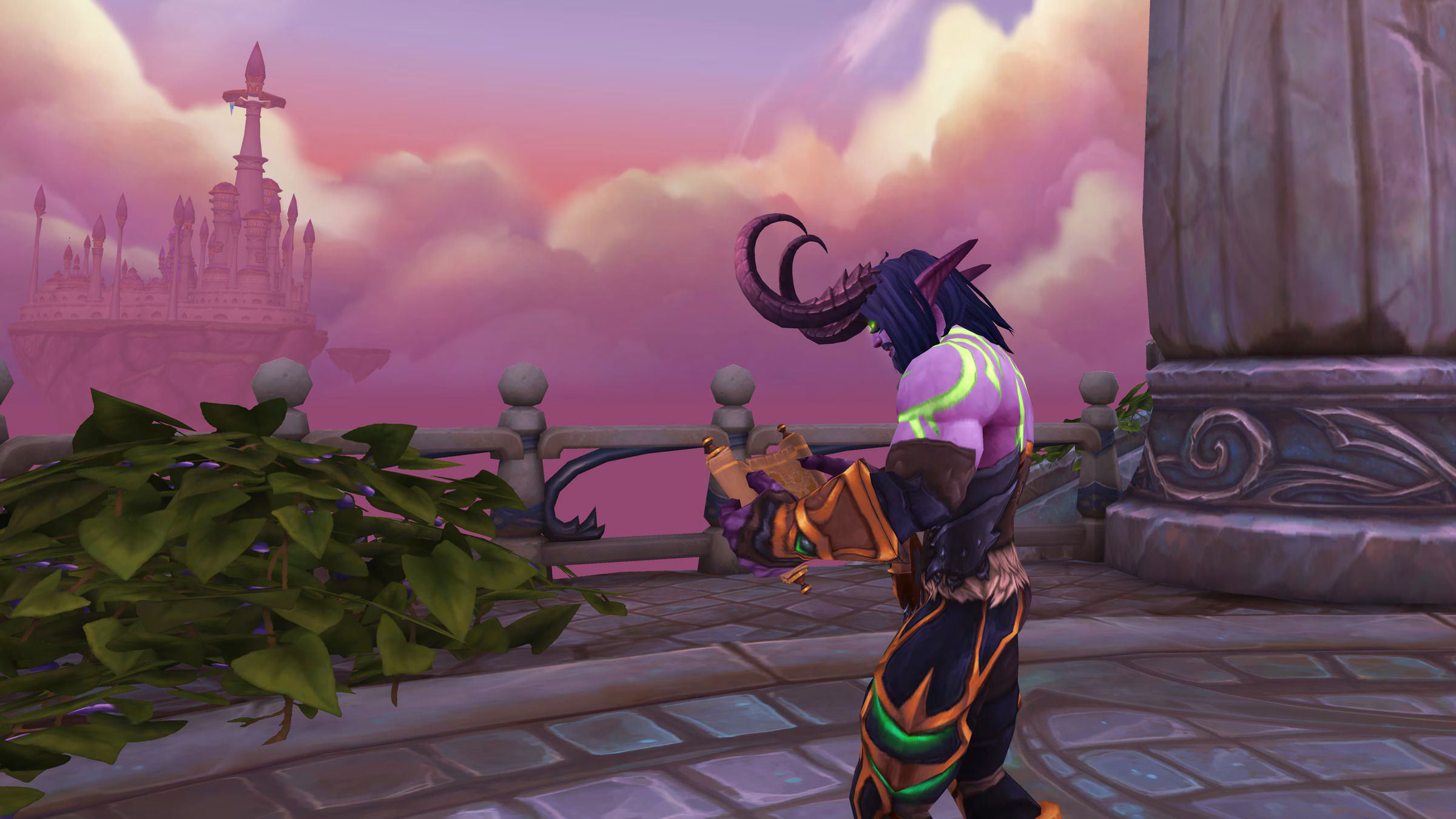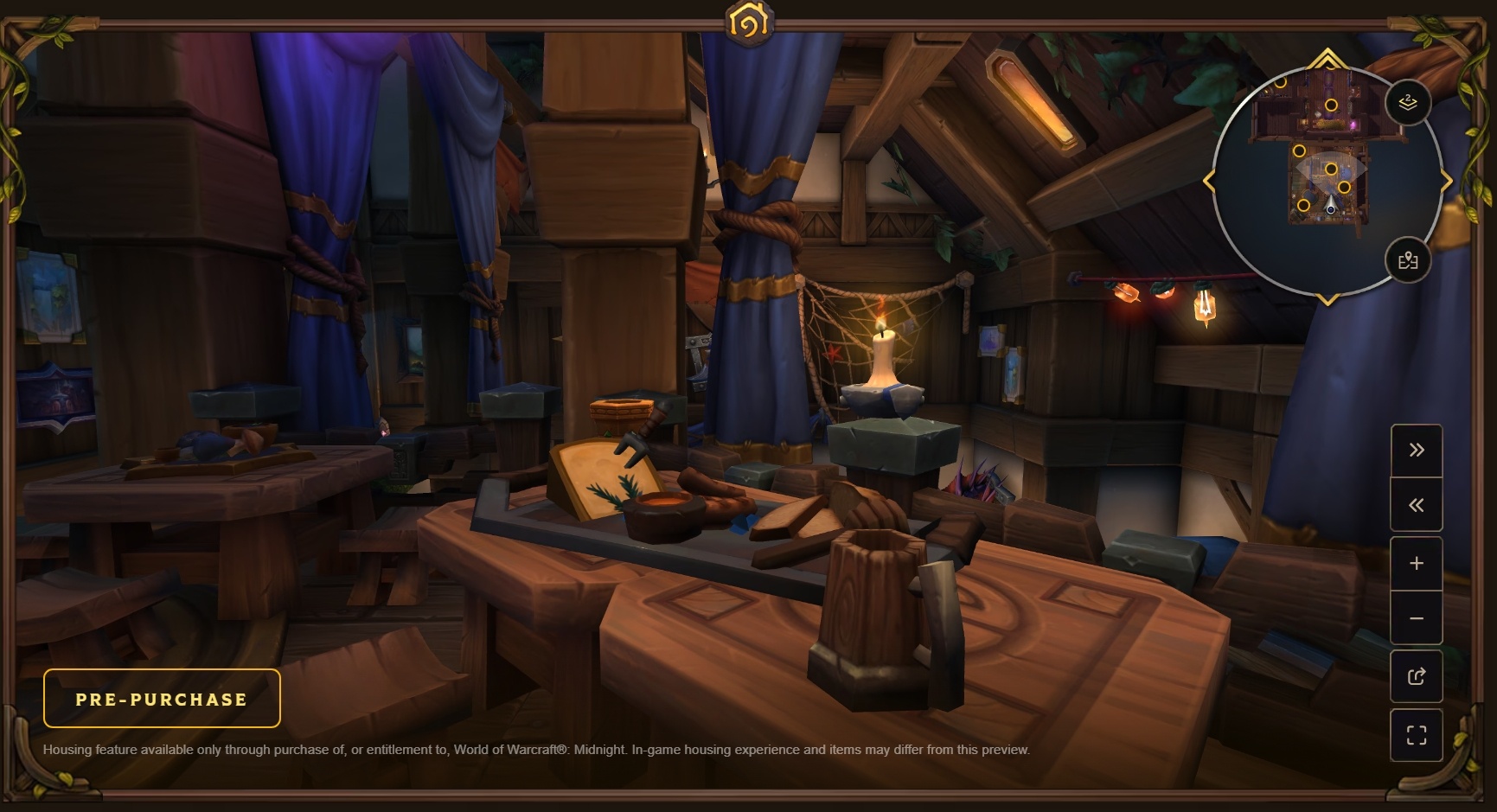The Addon Apocalypse: World of Warcraft’s Midnight Expansion Set to Dismantle Core Combat Utilities and Redefine Endgame Skill
Popular Now
 Poppy Playtime
Poppy Playtime
 CarX Street
CarX Street
 Fall Guys
Fall Guys
 Sonic the Hedgehog™ Classic
Sonic the Hedgehog™ Classic
 FIFA 23
FIFA 23
 Free Fire Max
Free Fire Max
 Candy Crush Saga
Candy Crush Saga
 Among Us
Among Us
 Warframe
Warframe
 Minecraft
Minecraft 
The landscape of Azeroth’s high-end World of Warcraft (WoW) content is poised for a seismic shift with the impending release of the Midnight expansion. Blizzard Entertainment has confirmed a radical restructuring of the game’s combat API, a move designed to ‘break’ and severely restrict the functionality of critical, decades-old third-party addons. This controversial decision targets the very foundation of the modern raid and Mythic+ dungeon experience, signaling an end to the ‘mandatory addon’ era and opening a new, high-stakes chapter for the MMORPG.
The most popular combat utilities, particularly WeakAuras and Deadly Boss Mods (DBM)/BigWigs, which have been considered essential for competitive play, are at the epicenter of this change. The response from the community, ranging from accessibility advocates to top-tier WoW raiders, is one of intense debate and apprehension, placing Midnight as one of the most defining and risky expansions in the game’s two-decade history.
The Core Conflict: Addons vs. Design Philosophy
For years, a silent ‘addon arms race’ has defined WoW’s endgame. Blizzard would design increasingly intricate and punishing boss mechanics, and the community—specifically through powerful tools like WeakAuras and DBM—would develop real-time scripts and warnings to essentially automate the problem-solving process. Game Director Ion Hazzikostas and the development team have been vocal about this dynamic, asserting that it has undermined their original vision for encounter design, making the game feel inaccessible to new and casual players who do not possess the elaborate addon setups.
The impending change is designed to reclaim control over the core gameplay loop. Blizzard plans to restrict the combat API, which feeds real-time data on boss abilities, auras, cooldowns, and more to third-party programs. By placing this crucial information in a ‘black box,’ addons will be prevented from running the complex, real-time logic that currently informs players exactly when to move, what to target, or which ability to use next. This move is less about a total addon ‘ban’ and more about disabling the core function of combat automation and real-time computation during endgame combat.
- WeakAuras: As one of the most flexible and potent tools, it will lose the ability to trigger dynamic alerts based on combat log events, severely limiting its utility as a custom boss-mechanic warning system and rotation helper. The WeakAuras team has even hinted at not supporting a full combat-ready version for Midnight due to the restrictions (Source: DualShockers).
- Deadly Boss Mods (DBM) / BigWigs: The foundational raid alert addons, these utilities will no longer be able to reliably track and announce boss abilities in real-time, effectively ceasing to function as the mandatory ‘boss cheat sheet’ they have long been.
- Rotation Helpers (e.g., Hekili): Addons that recommend optimal ability rotations in real-time based on buffs, procs, and cooldowns will also be rendered obsolete by the API restrictions and the wider initiative to simplify class rotations.
 The Blizzard Promise: Rebuilt Accessibility and Legibility
The Blizzard Promise: Rebuilt Accessibility and Legibility
To mitigate the fallout of this ‘addon apocalypse,’ Blizzard is simultaneously introducing a series of significant quality-of-life and accessibility features directly into the default UI, aiming to bake in the functionality that players have come to rely on:
Clarity of Combat:
Blizzard’s new philosophy centers on designing encounters that are inherently more legible. Boss mechanics will be telegraphed more clearly through in-game visual and audio cues, rather than relying on a third-party flashing icon to tell the player to move. This includes:
- Simplified Class Design: An across-the-board reduction in ‘button bloat’ and ability complexity, making optimal play easier to achieve with the default UI.
- Improved Visual Cues: Clearer visual telegraphs for hazardous effects and key boss abilities, reducing the reliance on scripted addon timers.
- Native UI Integration: The slow rollout of built-in alternatives for essential utilities, such as an official damage meter, enhanced nameplates, and a basic rotation assist tool (Source: Vice, MMORPG.com).
- Adjustment of Encounter Design: Boss fights will be tuned around the expectation that players are operating without real-time computational assistance. This will likely mean fewer high-frequency, twitch-reaction mechanics and more focus on player positioning, communication, and basic awareness.
The overarching goal is to ‘level the playing field,’ ensuring that success in high-end PvE is determined by a player’s knowledge of the fight and situational awareness, not the complexity of their addon folder.
Community Reaction and the Accessibility Crisis
The news has ignited fierce debate across the WoW community. While many commend the intention to reduce complexity and make the game more accessible to newcomers, a significant portion of the veteran player base and disability advocates are expressing profound concerns.
The Accessibility Paradox:
For a large subset of players, particularly those with visual impairments, hearing loss, or motor skill challenges, addons like WeakAuras are not a convenience—they are a crucial accessibility feature. Customizable visual alerts, high-contrast markers, and amplified sound cues provided by these tools allow disabled gamers to participate in challenging endgame content. The fear is that Blizzard’s replacement features, developed by a smaller team, will inevitably be less robust and customizable than the community-driven solutions developed over years, effectively locking out these players from the content they enjoy (Source: Reddit).
The Loss of Customization:
Beyond combat, many popular addons offer quality-of-life improvements and deep UI customization that Blizzard has promised to preserve, but the extent of the combat API lockdown is currently causing uncertainty. If the restrictions extend beyond immediate combat mechanics to general utility, the entire custom UI ecosystem of WoW could be threatened.
Expert Opinion:
The general consensus among gaming journalists and MMO content creators is that this is a colossal gamble. The successful execution hinges entirely on the quality and timeliness of Blizzard’s native replacements. If the new built-in tools are inadequate or late, the player experience in the Midnight pre-patch and initial raid tier could suffer immensely, leading to a potential player exodus from the competitive scene (Source: PC Gamer, WoWVendor).
A New Era for WoW Gaming: What It Means for Players
The transition into the Midnight expansion demands a new mindset from all players, especially those involved in Mythic raiding and high-key Mythic+. The focus is shifting away from relying on screen clutter and automated warnings and back toward fundamental game knowledge and situational awareness—skills that once defined classic WoW gameplay.
The addon development community is now in a holding pattern, working directly with Blizzard to understand the new ‘black box’ API and determine what creative, non-computational customization will still be possible. While full-scale combat automation is over, addons for aesthetic UI adjustments, damage logging (like Details!), and quest tracking (like Questie) are expected to remain functional, albeit with some inevitable limitations.
 Ultimately, Blizzard is betting on a less-is-more approach: simplifying class mechanics and clarifying boss mechanics so that the base game is strong enough to stand on its own, without third-party supplements being a prerequisite for success. This ambitious strategy aims to create a fairer, more accessible, and more intuitive experience, but it comes with the heavy price of sacrificing a beloved, community-driven ecosystem that has flourished for nearly twenty years.
Ultimately, Blizzard is betting on a less-is-more approach: simplifying class mechanics and clarifying boss mechanics so that the base game is strong enough to stand on its own, without third-party supplements being a prerequisite for success. This ambitious strategy aims to create a fairer, more accessible, and more intuitive experience, but it comes with the heavy price of sacrificing a beloved, community-driven ecosystem that has flourished for nearly twenty years.








 The Blizzard Promise: Rebuilt Accessibility and Legibility
The Blizzard Promise: Rebuilt Accessibility and Legibility